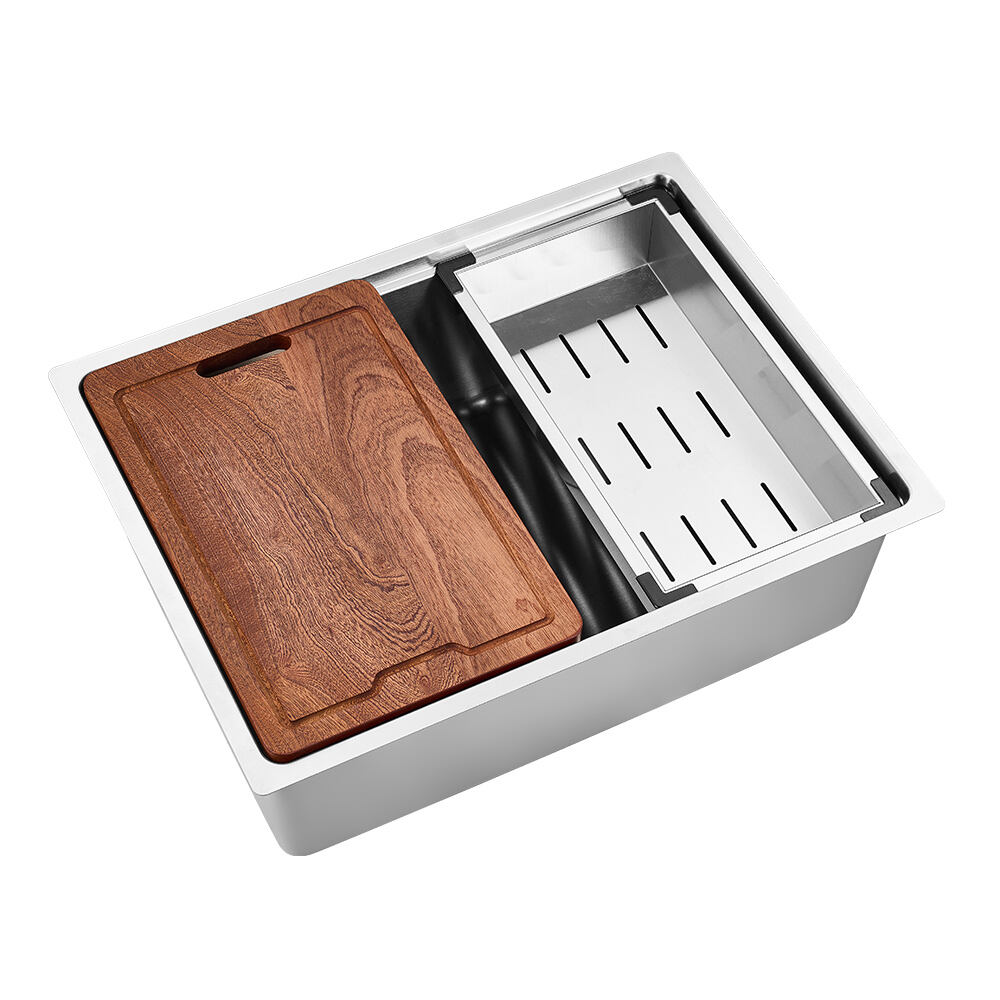Understanding Kitchen Basin Materials and Their Impact on Longevity
Choosing the right material for your kitchen basin is a crucial decision that impacts not just the aesthetics of your kitchen, but also how well your sink withstands daily use. Kitchen basin durability varies significantly across different materials, affecting everything from scratch resistance to heat tolerance. As homeowners invest considerable time and resources in kitchen renovations, understanding how various materials perform over time becomes essential for making an informed decision.
The relationship between material choice and kitchen basin durability extends beyond simple wear and tear. Each material brings its own set of characteristics that influence how it handles common kitchen challenges, from hot pans to sharp utensils, and harsh cleaning chemicals to constant water exposure. Let's explore the comprehensive impact of different materials on your sink's longevity and performance.
Stainless Steel: The Professional's Choice
Composition and Strength Factors
Stainless steel kitchen basins represent the gold standard in durability and performance. The material's inherent strength comes from its composition of chromium, nickel, and steel, creating a surface that resists corrosion and maintains its appearance over time. Higher-grade stainless steel, typically 16 or 18 gauge, offers superior kitchen basin durability and resistance to denting.
The chromium content in stainless steel forms an invisible protective layer that continuously regenerates when scratched, ensuring long-term protection against rust and deterioration. This self-healing property significantly contributes to the material's exceptional longevity in kitchen environments.
Maintenance Requirements and Longevity
While stainless steel exhibits remarkable durability, proper maintenance enhances its lifespan. Regular cleaning with mild soap and water prevents mineral buildup, while occasional polishing maintains its lustrous appearance. With proper care, a quality stainless steel basin can last several decades, making it a cost-effective choice for long-term kitchen installations.
The material's resistance to extreme temperatures and chemical exposure further solidifies its position as a durable option for busy kitchens. However, users should be mindful of avoiding abrasive cleaners that might scratch the surface, potentially compromising its protective properties.
Granite Composite: Natural Strength Meets Modern Technology
Material Composition Benefits
Granite composite sinks combine natural granite stone particles with acrylic resins, creating a remarkably durable and aesthetically pleasing option. This engineered material typically contains 80% granite and 20% resin, resulting in exceptional kitchen basin durability that often surpasses traditional materials. The density and hardness of granite composite make it highly resistant to chips, scratches, and impacts.
The uniform composition throughout the material means that any surface wear remains less noticeable compared to coated or plated alternatives. This characteristic ensures that the sink maintains its appearance even after years of heavy use, contributing to its growing popularity among homeowners seeking long-lasting solutions.
Heat and Impact Resistance
One of the standout features of granite composite is its superior heat resistance, capable of withstanding temperatures up to 280°C without damage. This heat tolerance eliminates concerns about placing hot pots and pans directly in the sink, a common cause of damage in other materials. The material's impact resistance also proves invaluable in busy kitchens where heavy cookware handling is routine.
While granite composite demonstrates impressive durability, its dense composition can make it more susceptible to cracking if exposed to extreme temperature changes. Users should exercise caution when alternating between very hot and cold water to maximize the material's longevity.
Porcelain and Ceramic: Traditional Beauty with Modern Improvements
Manufacturing Process Impact
Modern porcelain and ceramic kitchen basins benefit from advanced manufacturing techniques that significantly enhance their durability. The firing process at extremely high temperatures creates a dense, non-porous surface that resists staining and bacterial growth. This improved kitchen basin durability helps overcome historical concerns about the material's fragility.
The glazing process adds another layer of protection, creating a smooth, hard surface that's resistant to scratches and chemical damage. However, the quality of this protective layer varies among manufacturers, making careful product selection crucial for ensuring long-term performance.
Daily Use Considerations
While modern ceramic and porcelain sinks offer improved durability, they still require thoughtful use to maintain their condition. Heavy objects dropped from height can chip or crack the surface, and extreme temperature changes may stress the material. Regular cleaning with non-abrasive products helps preserve the protective glaze and maintain the sink's appearance.
The material's smooth surface resists staining and makes cleaning easier, contributing to its longevity. However, users should avoid harsh cleaning products and implement protective measures, such as sink grids, to prevent damage from heavy cookware.
Copper and Bronze: Living Finishes That Age Gracefully
Patina Development Process
Copper and bronze kitchen basins offer unique durability characteristics, developing a living finish that changes over time. The natural patina formation process creates a protective layer that enhances the material's resistance to corrosion and wear. This evolution of appearance becomes part of the material's charm, though it requires understanding and acceptance from users.
The patina's development depends on various factors, including water chemistry and usage patterns. While some may view these changes as maintenance concerns, they actually contribute to the sink's long-term kitchen basin durability by providing additional protection against environmental factors.
Care Requirements for Longevity
Maintaining copper and bronze sinks requires specific care routines to ensure optimal durability. Regular cleaning with appropriate products helps manage patina development and prevents unwanted spotting or discoloration. Avoiding acidic substances and harsh chemicals preserves the material's natural protective properties.
These materials demonstrate remarkable durability when properly maintained, often lasting generations with proper care. Their antimicrobial properties provide an additional benefit, contributing to both durability and hygiene in the kitchen environment.
Frequently Asked Questions About Kitchen Basin Materials
What Makes Some Kitchen Basin Materials More Durable Than Others?
The durability of kitchen basin materials depends on several factors, including molecular structure, manufacturing processes, and surface treatments. Materials like stainless steel and granite composite excel in durability due to their resistance to scratches, heat, and impacts. The presence of protective elements, such as chromium in stainless steel or resins in granite composite, significantly enhances their longevity.
How Can I Extend the Lifespan of My Kitchen Basin?
Regular maintenance plays a crucial role in extending your kitchen basin's lifespan. This includes using appropriate cleaning products, avoiding harsh chemicals, implementing protective measures like sink grids, and addressing any issues promptly. Different materials require specific care routines, so following manufacturer guidelines is essential for maintaining durability.
Which Basin Material Offers the Best Value for Long-term Use?
When considering long-term value, stainless steel and granite composite typically offer the best combination of durability and cost-effectiveness. While initial costs may be higher than some alternatives, their resistance to damage, low maintenance requirements, and extended lifespan make them economical choices over time. The specific choice depends on individual needs, usage patterns, and aesthetic preferences.
Table of Contents
- Understanding Kitchen Basin Materials and Their Impact on Longevity
- Stainless Steel: The Professional's Choice
- Granite Composite: Natural Strength Meets Modern Technology
- Porcelain and Ceramic: Traditional Beauty with Modern Improvements
- Copper and Bronze: Living Finishes That Age Gracefully
- Frequently Asked Questions About Kitchen Basin Materials



